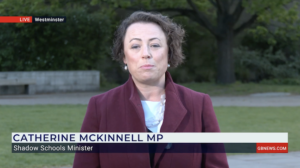THE WINNERS AND LOSERS IN EUROPE’S INFLATION SURGE

A faster than expected global recovery facilitated by successful Covid-19 vaccination rollouts, is pushing inflation levels above central bank targets, which Bloomberg Intelligence (BI) believes is set to have both positive and negative knock-on effects on European sectors and corporates.
BI’s report, which examines inflation across Stoxx Europe 600 index, outlines how it believes that hard commodity industries are expected to be well-positioned to capture value, while many consumer-facing companies will be able to hedge or pass on higher input costs to customers. Conversely, BI believes that car makers and industrials are at greatest risk, given price competition and raw material cost exposure.
Looking ahead, BI’s analysis highlights a range of issues, such as monetary and fiscal stimulus, labour shortages, underinvestment and raw material supply chain disruptions, which all suggesting that inflation is unlikely to ease any time soon.
Will Hares, Senior Energy Analyst at Bloomberg Intelligence, said: “Our analysis has identified varying sectoral implications in Europe from a higher inflation context. It highlights Europe’s hard-commodity-exposed sectors as being best positioned to capture value, while industrials and carmakers are most at risk from rising raw-material input costs, supply-chain disruption and margin pressure.”
BI’s European industry expected inflation impact
|
Industry |
Anticipated impact |
|
Materials & Mining |
Positive |
|
Oil, Exploration & Production |
Positive |
|
Carbon |
Positive |
|
Consumer Staples |
Neutral |
|
Telecoms |
Neutral |
|
Luxury Goods |
Neutral |
|
Food Retailers |
Neutral |
|
Car Manufacturers |
Negative |
|
Industrials |
Negative |
Source: Bloomberg Intelligence, 2021
Within materials and mining, BI’s analysis highlights steel producers as having been the early beneficiaries of the post-pandemic recovery, with a tight a supply-demand picture leading to record prices and margin. While this traction may unwind in H2 2021 as idled capacity is reactivated, some producers could lock in healthy margins right up to Q1 2022, even in a falling steel-price environment.
Carmakers, meanwhile, are facing cost inflation pressures but, unlike consumer staples, have a limited ability to pass these on to consumers as underlying demand remains week. BI data shows that European car registrations are down 25% in the year to May 2021 compared to the same period in 2019 and as a result discounting is rife. Rising new car CPI values are misleading as they largely reflect the higher sticker prices for an increased sales mix of new-to-market expensive electric models.




